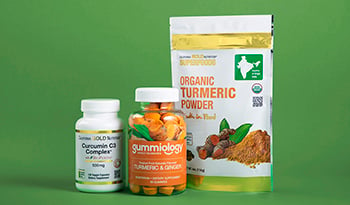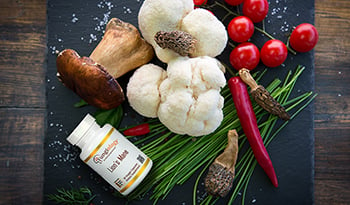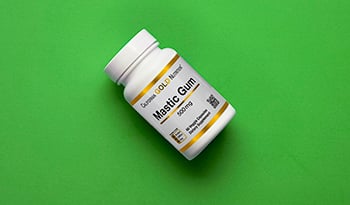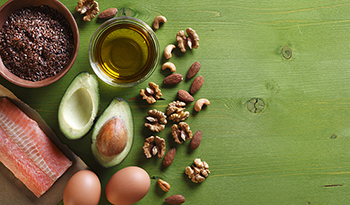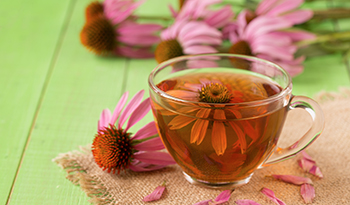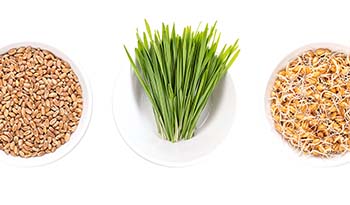Ciulin de lapte: cel mai bun supliment pentru a sprijini sănătatea ficatului
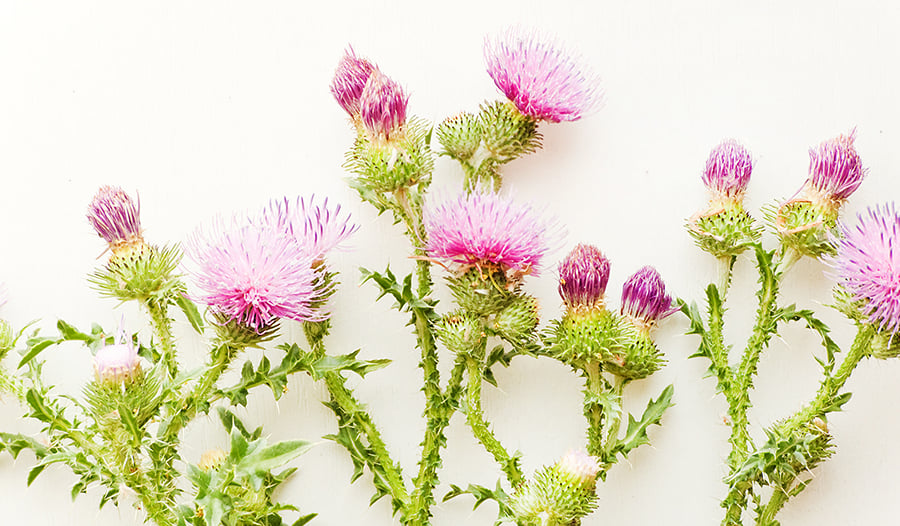
Care este rolul ficatului în organism?
Ficatul este cel mai mare organ intern solid din organism. Situat în cadranul din dreapta sus al abdomenului, măsoară 6 inci lățime și cântărește aproximativ 3 kilograme. Nu este o surpriză faptul că ficatul joacă un rol important în organism, deoarece este implicat în multe funcții zilnice esențiale diferite.
Ficatul lucrează cu alte organe pentru a digera, absorbi și procesa alimentele. Este implicat în stocarea glucozei sau a zahărului, care este utilizat atunci când organismul necesită mai multă energie. Produce bilă, care este o substanță care ajută la digerarea grăsimilor din alimente și absoarbe și stochează vitamine solubile în grăsimi, inclusiv vitaminele A, Dși E.
Ficatul produce substanțe care sunt implicate în reglarea formării cheagurilor de sânge și producerea de globule roșii. Împreună cu rinichii, ficatul este, de asemenea, unul dintre principalele organe de detoxifiere ale organismului. Metabolizează drogurile și alcoolul, lucrând, de asemenea, pentru a elimina substanțele nocive din organism, inclusiv toxinele și substanțele chimice din mediu. Când funcția hepatică scade, aceasta poate afecta negativ funcționarea eficientă a acestor procese.
Mai mulți factori pot afecta negativ funcția hepatică și sănătatea. Acestea includ consumul excesiv de alcool, obezitatea, expunerea la toxine, anumite medicamente și infecții virale. Din fericire pentru noi, ficatul are cea mai mare capacitate de a se regenera mai mult decât orice alt organ din organism. O plantă specială este bine cunoscută pentru calitățile sale de protecție a ficatului și beneficiile pentru sănătate.
Ce este ciulinul de lapte?
Ciulinul de lapte este una dintre cele mai studiate și cunoscute plante medicinale pentru protecția și susținerea ficatului. Cunoscut și sub numele său științific, Silybum marianum, ciulinul de lapte este o plantă pe bază de plante care a fost folosită ca supliment de secole pentru a susține funcția hepatică. Prima utilizare a plantei datează din primul secol, când medicul grec Dioscoride credea că planta conține atribute vindecătoare pentru mușcăturile de șarpe. Din punct de vedere istoric, a fost folosit ca supliment pentru afecțiunile ficatului și vezicii biliare.
Ciulinul de lapte este un membru al familiei Asteraceae, care este o familie de plante care include și floarea-soarelui, ambrozie și margarete. Există peste 200 de specii de ciulin de lapte. Anumite specii pot crește până la șase picioare înălțime și pot înmugurii flori colorate. Contrar numelui său, ciulinul de lapte nu provine de la o vacă. De fapt, nu conține lactate. Își primește numele de la petele albe de pe floare. Tulpina plantei conține, de asemenea, o sevă lăptoasă. Planta este originară din sudul Europei și crește, de asemenea, în Statele Unite, America de Sud și Australia.
Ce face ciulinul de lapte atât de util?
Ingredientul activ din ciulinul de lapte este un compus vegetal numit silimarină, care constă din silibină sau silibinină. Silymarin se găsește în sămânța plantei. Se crede că are proprietăți antioxidante prin creșterea nivelului de glutation.
Glutationul este un antioxidant puternic, produs în organism, care ajută la combaterea radicalilor liberi și ajută la procesul de detoxifiere. Nivelurile de glutation scad în mod natural odată cu vârsta și din expunerea recurentă la toxine. Cercetările au arătat că poate ajuta organismul prin susținerea procesului de detoxifiere, în care toxinele sunt eliminate din organism prin ficat. Se crede, de asemenea, că silimarina are efecte antioxidante care ajută la susținerea, menținerea și regenerarea celulelor hepatice sănătoase.
Ce spun cercetările despre ciulinul de lapte?
Au existat studii mixte privind utilizarea de ciulin de lapte. Unele studii au arătat că ciulinul de lapte poate oferi protecție antioxidantă ficatului, rinichilor și tractului gastro-intestinal. Din punct de vedere istoric, ciulinul de lapte a fost de obicei utilizat pentru a aborda afecțiunile hepatice, cum ar fi hepatita virală, ciroza și ficatul gras.
Ciroza este un termen care se referă la cicatrizarea ficatului. Studiile sugerează că ciulinul de lapte poate prezenta proprietăți antiinflamatorii, deoarece poate regla în jos calea inflamatorie.
Mai multe studii au arătat că planta poate fi utilă în scăderea enzimelor hepatice care sunt crescute din cauza hepatitei virale și a bolilor hepatice grase nealcoolice.
Câteva studii sugerează că ciulinul de lapte poate fi, de asemenea, util în menținerea nivelului sănătos de colesterol, în special a celor cu diabet zaharat de tip 2, deoarece ficatul este responsabil pentru producerea și metabolizarea colesterolului. Silymarin poate avea și beneficii antiinflamatorii pentru sănătate.
Silimarina a fost utilizată ca antidot pentru otrăvirea cu ciuperci. Ciuperca morții sau ciuperca Amanita reprezintă 95% din bolile umane cauzate de ciuperci. Este răspândit pe scară largă în Europa și poate fi găsit în anumite zone ale Statelor Unite și în alte părți ale lumii. Eliberează o toxină numită amatoxină, care declanșează inițial tulburări abdominale. Pe parcursul unei săptămâni până la trei săptămâni, această toxină poate provoca leziuni hepatice și insuficiență, ducând în cele din urmă la moarte, chiar și în absența simptomelor. Studiile au arătat că suplimentul ciulin de lapte poate fi eficient la pacienții cu otrăvire cu Amanita.
Doza de ciulin de lapte
Ciulinul de lapte este în general considerat sigur pentru consumul oral. Suplimentul poate fi găsit în capsule, pulbere și extracte. Cantitatea ingredientului activ depinde de metoda în care este preparat. De obicei, dozele pot varia, dar variază de la 150-300 mg, luate de două ori pe zi. Unii oameni au raportat reacții adverse gastro-intestinale, inclusiv greață, vărsături și diaree. Trebuie acordată atenție oricărei persoane cu alergie la ambrozie. Consultați-vă întotdeauna cu un medic înainte de a începe orice nou regim de îngrijire a sănătății.
Referințe:
- Medicina John Hopkins. Ficat: anatomie și funcții. 2020. https://www.hopkinsmedicine.org/health/conditions-and-diseases/liver-anatomy-and-functions. Accesat 19.04.2020.
- Siegel, A., Stebbing, J. Milk Thistle: semințe timpurii ale potențialului. Lancet Oncol. 2013 septembrie; 14 (10): 929-930.https://www.ncbi.nlm.nih.gov/pmc/articles/PMC4116427/. Accesat de la PubMed pe 4/19/2020.
- de Avelar, C., Pereira, E., de Farias Costa, P., de Jesus, P., de Oliveira, L. Efectul silimarinului asupra indicatorilor biochimici la pacienții cu boli hepatice: revizuire sistematică cu meta-analiză. World J Gastroenterol. 2017 iulie 21; 23 (27): 5004-5017.
- Pizzorno, J ND. Glutation. 2014 februarie; 13 (1): 8-12. https://www.ncbi.nlm.nih.gov/pmc/articles/PMC4684116/. Accesat de la PubMed pe 4/19/2020.
- Aller, R., Izaola, O., Gomez, S., Tafur, C., Gonzalez, G., Berroa, E., Mora, N., Gonzalez. J., de Luis, D. Efectul Silymarinului plus Vitamina E la pacienții cu boală hepatică grasă nealcoolică. Eur Rev Med Pharmacol Science. 2015 august; 19 (16): 3118-24. https://www.ncbi.nlm.nih.gov/pubmed/26367736. Accesat de la PubMed pe 4/19/2020.
- Achufusi, T., Patel, R. Ciulin de lapte. https://www.ncbi.nlm.nih.gov/books/NBK541075/. Actualizat 27.03.2020. Accesat de la PubMed pe 4/19/2020.
- Polachi, N., Bai, G., Li, T., Chu, Y., Wang, X., Li, S., Gu, N., Wu, J., Li, W., Zhang, Y., Zhou, S., Sun, H., Liu, C. Eur J Med Chem. 2016 noiembrie 10; 123:577-595. doi: 10.1016/j.ejmech.2016.07.070. Epub 2016 29 iulie https://www.ncbi.nlm.nih.gov/pubmed/27517806. Accesat de la PubMed pe 4/19/2020.
- Ebrahimpour-Koujan, S., Gargari, B., Mobasseri, M., Asghari-Jafarabadi, M. Indici glicemici mai mici și profil lipidic în rândul pacienților cu diabet zaharat de tip 2 care au primit o doză nouă de Silybum marianum (L.) Supliment suplimentar Gaertn (silymarin): un studiu clinic controlat randomizat triplu orb. Fitomedicină. 2018 15 mai; 44:39-44. doi: 10.1016/j.phymed.2018.03.050. Epub 2018 19 martie.
- Anthony, K., Subramanya, G., Uprichards, S., Hammouda, F., Saleh, M., 2013. Activități virale antioxidante și anti-hepatite c ale suplimentelor alimentare comerciale de ciulin de lapte. Antioxidanți, 2 (1): p. 23-36.
- Centrul Național pentru Sănătate Complementară și Integrativă. Ciulin de lapte. https://www.nccih.nih.gov/health/milk-thistle. Accesat 16.04.2020.
- Tyagi, A., Bhatia, N., Condon, M., Bosland, M., Agarwal, C., Agarwal, R. Efecte antiproliferative și apoptotice ale silibininei în cancerul de prostată de șobolan. Prostată. 2002 noiembrie 1; 53 (3): 211-7. Accesat de la PubMed pe 16.04.2020.
- Ghorbana, A., Zarvandi, M., Rakshandeh. H.. Un studiu controlat randomizat al unui compus pe bază de plante pentru îmbunătățirea parametrilor metabolici la pacienții diabetici cu dislipidemie necontrolată. Ținte de medicamente pentru tulburarea imună Endocr Metab. 2019; 19 (7): 1075-1082. doi: 10.2174/1871530319666190206213420. https://www.ncbi.nlm.nih.gov/pubmed/30727929. Accesat de la PubMed pe 16.04.2020.
- Ward, J., Kapadia, K., Brush, E., Salhanic, S. Intoxicație cu amatoxină: rapoarte de caz și revizuirea terapiilor actuale. https://www.jem-journal.com/article/S0736-4679(12)00238-7/pdf. Accesat 19.04.2020.
Declarație de declinare a responsabilității:Acest blog nu are ca scop să ofere un diagnostic.













































































 Cuprins
Cuprins



